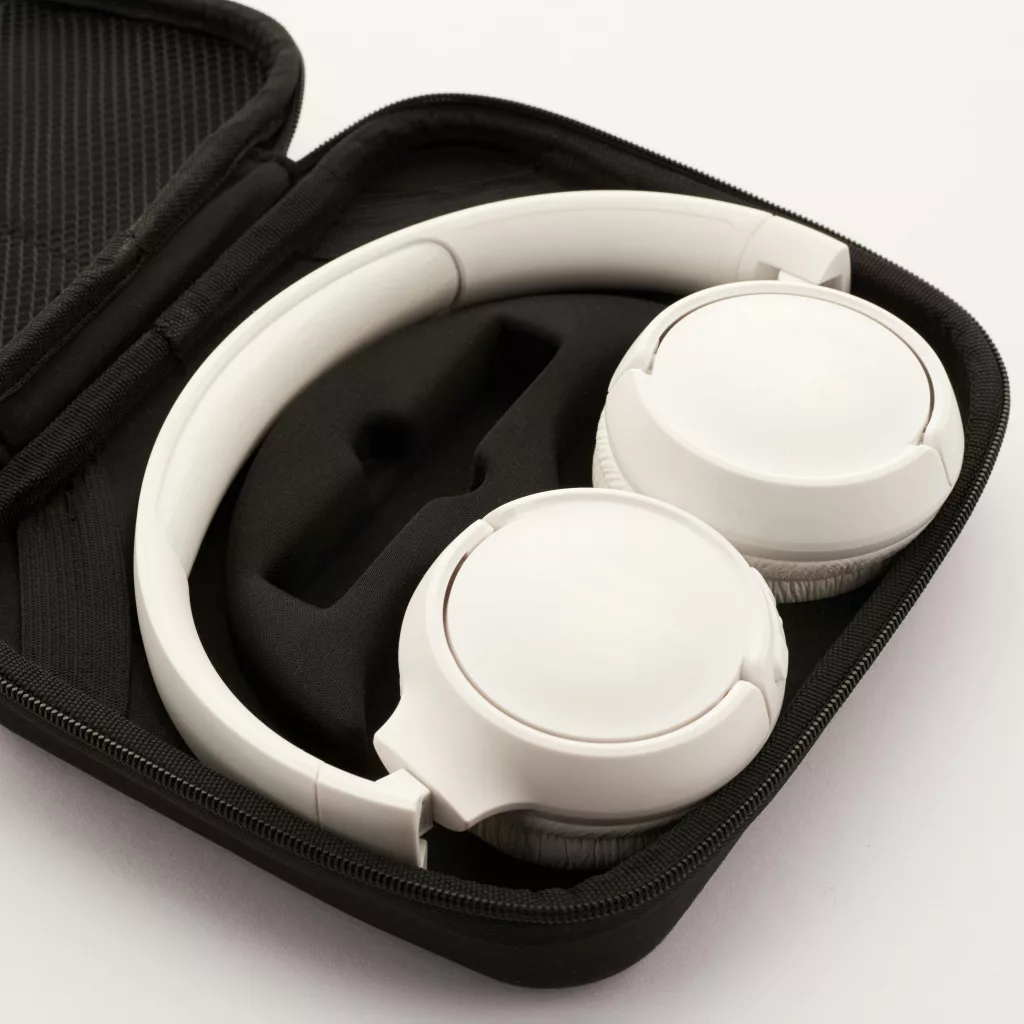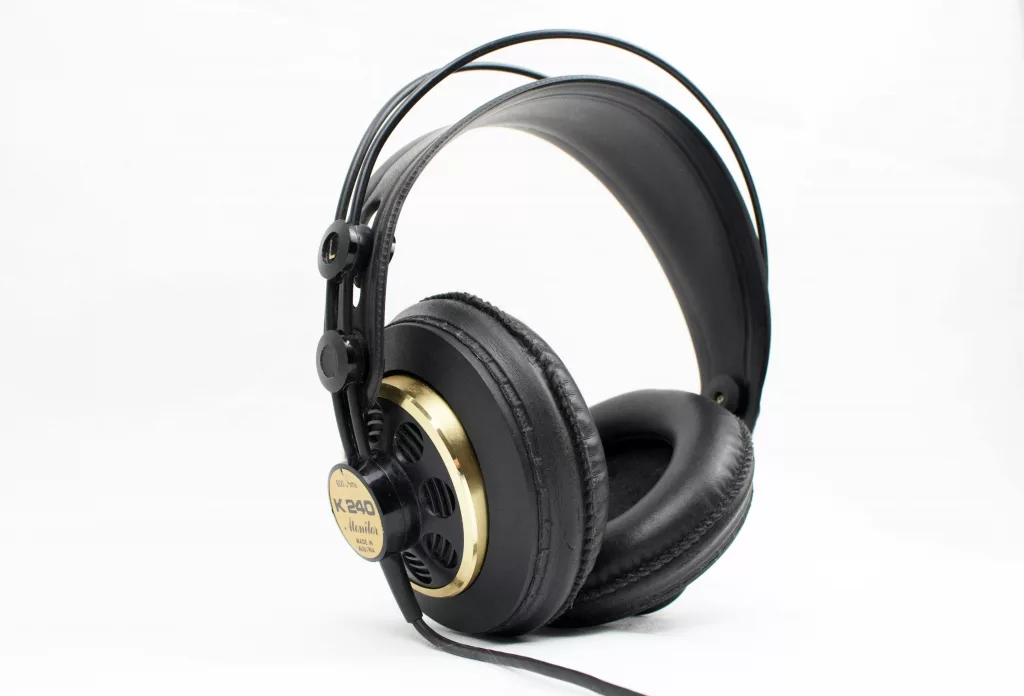The Headphones Revolution: Sound Quality and Comfort


The world of headphones has undergone a spectacular transformation over the decades, setting new standards in terms of sound quality and comfort.
Simple devices intended to provide private listening have become sophisticated fashion accessories, combining cutting-edge technology, elegant design and exceptional audio performance.
This article explores the headphone revolution, highlighting the significant advances in sound quality and comfort that have redefined the listening experience for music lovers. of the whole world.
The Origins: From Simple Headphones to Hi-Fi
The first audio headsets appeared at the beginning of the 20th century, mainly used by radio operators and aviation professionals.
They were rudimentary, with headphones connected by a simple metal headband.
However, with the advent of Hi-Fi in the 1950s, headphones began to play a vital role in faithfully reproducing music.
The Beginnings of Hi-Fi: Fidelity and Immersion
The introduction of stereophony was a major step in the evolution of headphones.
Music lovers were able to enjoy a more immersive sound experience thanks to the separation of the left and right audio channels.
Hi-Fi headphones have grown in popularity, therefore providing exceptional sound quality for home listening.
The Digital Age: Wireless Headphones and Noise Cancellation
The advent of digital technology has radically transformed headphones, paving the way for advanced features such as wireless connectivity and active noise cancellation.
Wireless Connectivity: Freedom of Movement
The elimination of cables marked an important step in the evolution of headphones.
Wireless technologies such as Bluetooth allow users to enjoy freedom of movement without compromising sound quality. This innovation was therefore particularly well received by sports fans and people on the move.
Noise Cancellation: An Oasis of Calm
The integration of active noise cancellation technology has revolutionized the listening experience. The sensors detect surrounding noises and generate reverse sound waves to neutralize them, creating a sound-insulating bubble.
This feature has therefore become an essential criterion for those looking for total immersion, whether in a noisy plane, a busy office or simply at home.


Design and Comfort: Fusion of Aesthetics and Ergonomics
In addition to technological advances, the headphone revolution has extended to the area of design and comfort.
Manufacturers have therefore understood the importance of combining aesthetics and ergonomics to offer a complete listening experience.
Innovative Materials: Lightness and Durability
The use of lightweight yet robust materials, such as aluminum and composites, has reduced the weight of the helmets while ensuring increased durability.
This development has therefore been welcomed by users who are looking for comfortable devices for long listening sessions.
Personalized Designs: Expression of Style
Headphones are no longer just functional accessories. Designers therefore pay particular attention to aesthetic aspects, offering a variety of designs, colors and finishes to suit individual preferences.
Some high-end models even include customization elements, allowing users to create unique helmets.
The Quest for Audio Quality: High Resolution and Surround Sound
Sound quality remains the holy grail for audiophiles, and the headphone revolution would not have been complete without significant improvements in this area.
High-Resolution Audio: Clarity and Precision
The advent of high-resolution audio has allowed headsets to reproduce finer sound details, providing exceptional clarity and precision.
Music lovers can now appreciate the subtlety of recordings with unprecedented audio fidelity.
Virtual Surround Sound: A Cinematic Experience
Some headsets now incorporate virtual surround sound technologies, creating a listening experience similar to that of a movie theater.
This feature appeals to fans of video games, movies and immersive content, pushing the boundaries of the audio experience.
Open vs. Open Helmet Closed Headphones: Auditory Duality
The evolution of audio headphones has given rise to an interesting duality: open headphones and closed headphones.
These two designs therefore offer distinct hearing experiences, meeting the varied needs and preferences of users.
Open Face Helmets: A Natural Immersion
Open-back headphones are distinguished by their perforated or mesh construction, allowing air to circulate between the headphones and the surroundings. This design creates an open and immersive sound experience.
The benefits of open-back headphones include a wider soundstage, increased spatialization and a feeling of natural immersion. However, this design lets sound escape, which can therefore affect sound insulation, limiting its use in noisy environments.
Closed Helmets: Confidentiality and Isolation
In contrast, closed-back headphones feature a sealed design, isolating the listener from outside noise and preventing sound leakage.
This increased isolation makes it an ideal choice for noisy environments or for discreet listening. However, this tightness can sometimes result in a more restricted soundstage and therefore a less natural perception of space.
Closed-back headphonesare often favored by studio audio professionalsfor their ability to maintain privacy while recording or mixing.


Personal Choice and Context of Use
The choice between open and closed headphones depends largely on individual preferences and the context of use.
Audiophiles appreciating natural and spacious sound reproduction may opt for open headphones, while those looking for Maximum isolation in noisy environments will turn to closed headphones.
Some hybrid models therefore attempt to combine the best of both worlds, offering increased versatility.
Essential Considerations for an Optimal Experience
- Audio Quality: Although wireless technologies have advanced significantly, some audiophiles still prefer the audio quality of wired connections.
- Battery Life: Wireless headphones rely on batteries, and extended battery life is crucial, especially for long listening sessions.
- Latency: Some wireless devices may experience noticeable latency, which can be crucial for applications requiring precise timing, such as watching videos.
By therefore integrating these considerations into the choice between open and closed headphones, as well as exploring the possibilities offered by wireless connectivity, users can personalize their hearing experience according to their individual preferences and contexts of use varied.
The headphone revolution continues, offering a diversity of options that transcend simple listening devices to become true partners in our musical and auditory exploration.
Selection of Headphones for the Studio: Find Your Ideal Hearing Partner
Choosing headphones for studio use is crucial to ensuring accurate and faithful listening.
Different headphones are therefore tailored to specific needs, whether for mixing, mastering, recording or other professional tasks.
Here is a selection of reputable headphones, each offering distinct features to meet various studio requirements.
1. Audio-Technica ATH-M50x Headphones
- Recommended Use: Mixing and Monitoring
- Main Features: Clear and precise sound, circum-aural design for effective sound isolation, foldable for portability.
- Recommended Use: Mixing and Mastering
- Main Features: Natural sound, extended frequency response, open earcups for spatial sound reproduction.
3. HeadsetBeyerdynamic DT 770 Pro
- Recommended Use: Studio Recording
- Main Features: Closed and comfortable, excellent sound insulation, powerful bass.
- Recommended Use: Monitoring and Recording
- Main Features: Lightweight, foldable, balanced frequency response, effective sound insulation.
- Recommended Use: Mixing and Mastering
- Main Features: Open design for precise spatialization, comfortable for prolonged sessions.
- Recommended Use: Mixing and Mastering
- Main Features: Closed, premium construction, detailed sound reproduction.
7. HeadsetFocal Listen Professional
- Recommended Use: Monitoring and Recording
- Main Features: Balanced sound, comfortable, excellent insulation.
8. HeadsetAudio-Technica ATH-R70x
- Recommended Use: Mixing and Mastering
- Main Features: Open, 45mm transducers, detachable cable.
- Recommended Use: Mixing and Mastering
- Main Features: Closed, neutral sound, circum-aural design.


Conclusion
The headphone revolution has dramatically transformed the way we enjoy music, movies and games. The relentless pursuit of sound quality and comfort has therefore led to extraordinary innovations, elevating the hearing experience to new heights.
As technology continues to advance, headphones remain at the heart of this revolution, providing users with a deep connection to the world of music and sound.
What does the future hold for the next generation of headphones?
One thing is certain: the exploration of the auditory experience is an adventure that has only just begun. Future advancements could bring even more innovative features, redefining the industry standard and delivering even richer and more immersive hearing experiences.
So stay tuned, because the headphone revolution promises to take us to unexplored sonic horizons.
